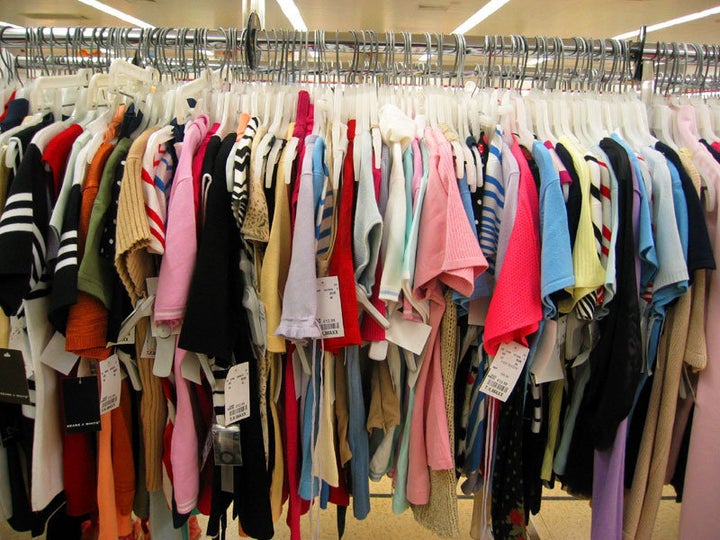
When it comes to recycling programs, U.S. municipalities have come a long way over the last thirty years. City leaders have spearheaded major programs to implement systems for paper, plastic and aluminum, and local citizens are participating in record numbers.
Innovative companies like RecycleBank, which partner with municipalities and haulers to reward households for the amount they recycle each week, has helped turn recycling into a family activity everyone can get excited about.
But city recycling programs can't stop at bottles and cans. There's still a lot more local leaders can do to drive down the amount of waste sent to costly landfills each year.
Especially when it comes to textile waste.
The average American consumes 70 pounds of clothes, shoes and household textiles a year. According to the EPA, more than 85 percent of that is discarded with the trash, which means that for each of its inhabitants, the average city hauls 60 pounds of recyclable textiles to the landfill.
The long-term effects of land-filled textiles range from methane, a major greenhouse gas and a significant contributor to global warming, being released by decomposing clothes, to the formation of leachate that has the potential to contaminate both surface and groundwater sources.
Needless to say, discarded clothes are bad for the environment. But what is less understood is that they also damage city balance sheets. An urban area with a population of 50,000 annually pays for the handling and disposal of 3,000 tons of textiles.
A solid textile recycling program can save municipalities millions of dollars by cutting costs on waste transport as well as on the landfill real estate itself. Plus, with the right steps, a good textile recycling program can create new jobs -- critical in today's economy. All with little to no cost to the city.
So what should cities take into consideration as they plan a textile recycling program?
The first thing to remember is that cities don't need to start from scratch. There are plenty of existing companies that partner with cities to launch citywide textile recycling programs.
These companies manage collections, educate communities to drive behavioral changes and oversee the start-to-finish process of recycling. They can also advise on everything, including the best strategic locations for placing textile recycling bins like public works facilities, community centers, libraries, and parks.
From there, there are several best practices cities must keep in mind as they proceed with a textile recycling program.
To smooth the way going forward, local governments should be sure to amend legislation to "add" textiles in their recycling programs. Textiles were in 2009 identified by the state of Illinois as one of the top-five priority materials to increase recycling. State and local government can support this process by revising solid waste and recycling legislation language to include textiles.
And as with any new initiative, there should be clear goals. A mandated diversion rate can play an important role to achieve recycling goals. While in some places, like The Netherlands, for example, a government mandate requires all municipalities to divert 11 lbs of textiles from the waste stream per inhabitant annually. But American cities need not wait for a state or federal mandate to take action.
Once the goals have been agreed to, and a company is contracted for the job, the most important next step is to make the collection system itself work well. Without it there is no program at all.
The model for running an efficient and productive textile collection system should be based on the following:
•Convenient Locations: Cities should make it extremely convenient for the largest possible number of local residents to drop off their unwanted clothes and shoes. Collection boxes at prominent places accessible 24x7 are critical to driving increased recycling rates.
•Low to No Cost: Recycling programs must be cost effective to be sustainable. If it's costly to the city and its residents, it will never get off the ground. The right system is the one that costs little to no money to get going.
•Education and promotions: Cities must educate their residents about the importance of recycling clothing - especially because a pair of old jeans can seem less like a "recyclable" than an empty Coke can. Communication pre-launch and as the program rolls out is critical so the public understands:
- Why it's important to recycle used clothing
- What is appropriate to recycle
- How to prepare the recyclables
- Where to drop them off
- What happens to the collected materials once they've been dropped
Cities can get creative with this one: For the launch of its newly announced textile recycling initiative, New York City partnered with a video how-to website called HowCast to help push the concept of clothing recycling via online videos about recycling.
•Reporting: City officials should agree on the types and frequencies of reporting, the right official for the management of the program and the department he or she will report to.
•Measuring Success and Rewards: The program should be evaluated on ongoing basis. Appropriate rewards and recognition can further encourage residents to participate more enthusiastically.
Governments at every level are responsible for protecting their communities' natural resources, promoting healthy living standards for their citizens, and controlling costs wherever possible. Textile recycling programs address all of these concerns, and should be at the top of every city hall agenda.
Mattias Wallander is CEO of USAgain, a textile collection company headquartered in Chicago. The company collects used clothing in major markets across the U.S. including Chicago, Seattle, Atlanta, Milwaukee and, soon, San Francisco.